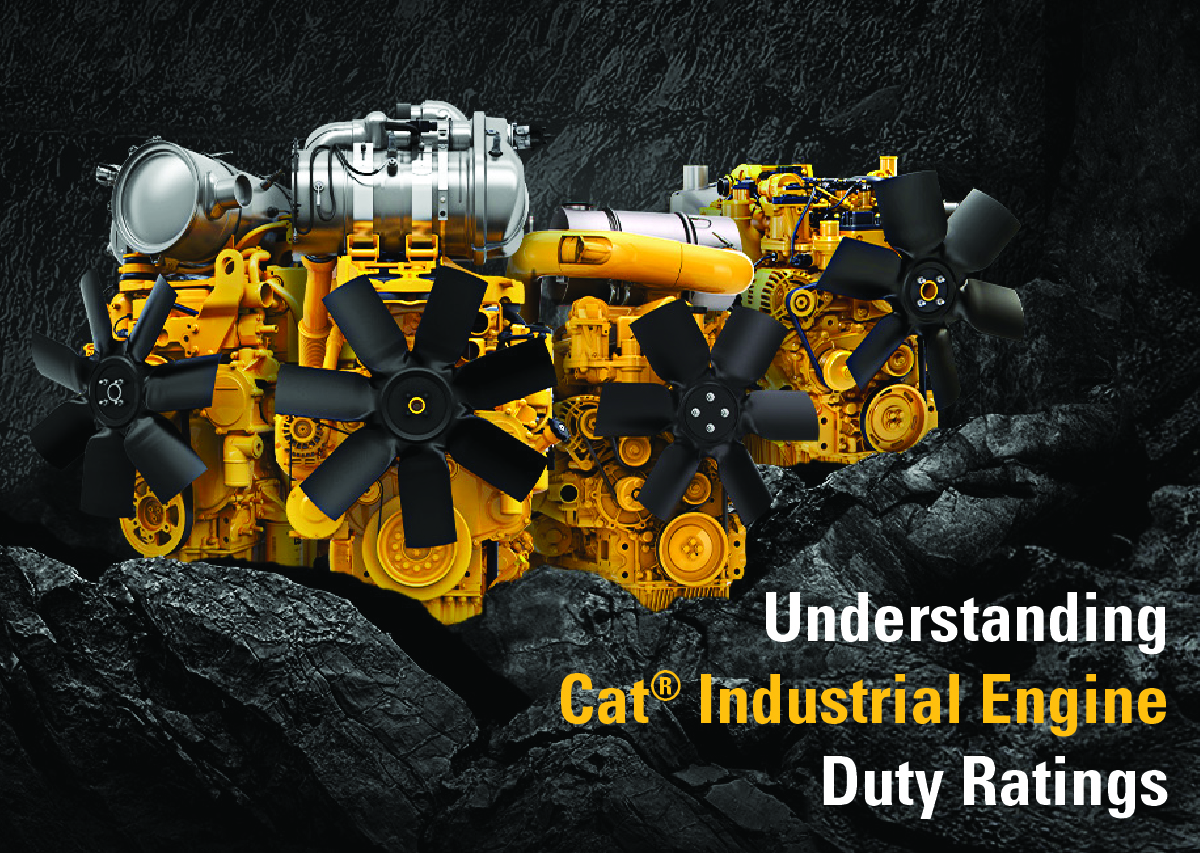
Understanding Cat Industrial Diesel Engine Ratings
Selecting the right engine for your application goes beyond just horsepower—it’s about matching the engine’s rating to its expected workload. Whether it is for continuous heavy-duty use or occasional peak loads, different ratings determine how long an engine can sustain power, its load factor, and overall lifespan.
Cat industrial engines are categorized into five rating classifications: IND-A, IND-B, IND-C, IND-D, IND-E. These classifications help industries—from construction to power generation—determine the optimal engine type based on the application.
The table below breaks down each rating, outlining power utilization, operational limits, and expected annual runtime to help you choose the right engine for your needs.
|
Industrial Engine Ratings |
IND-A (CONTINUOUS) |
IND-B |
IND-C (INTERMITTENT) |
IND-D |
IND-E |
|
Ratings Definition |
Heavy-duty service rated load and speed up to 100% of the time without interruption or load cycling |
Moderate-duty service where power and/or speed are cyclic |
Service where power and/or speed are cyclic |
Power is required by periodic overloads. |
Speed and power are required for a short time for initial starting or sudden overload. |
|
Load Factor (see chart below) |
Average load factor to approach 100%. |
Load factor limited to 85%. |
Load factor limited to 70%. |
Load factor limited to 50%. |
Load factor limited to 35%. |
|
Operation Limit |
No hour or load factor limitation. Continuous operation at full load. |
Time at full load not to exceed 80% of the duty cycle.
(see Figure 1 for typical IND-B Rating Duty Cycle) |
Time at full load not to exceed 50% of the duty cycle or one-hour max. Full load operation limited to one uninterrupted hour followed by one hour of operation at or below 75% of the full load power curve condition.
(see Figure 2 for typical IND-C Rating Duty Cycle) |
Time at full load not to exceed 10% of the duty cycle or 30 minutes max, followed by one hour at Intermittent.
(see Figure 3 for typical IND-D Rating Duty Cycle) |
Time at full load not to exceed 5% of the duty cycle or 15 minutes max, followed by one hour at intermittent or duration of the emergency. |
|
Estimated Operating hours per year |
Over 4000 hours |
4000 hours |
3000 hours |
1500 hours |
500 hours |
|
Typical Application (examples) |
24/7 industrial generator |
Irrigation where normal pump demand is 85% of engine rating
Oil field mechanical pumping/drilling
Air compressors |
Bulldozers |
Excavators |
Lighting towers |
Rating conditions for engines up to and including 7.1L displacement are based on ISO/TR14396.
Ratings for engines above 7.1L displacement are based on SAEJ1995.
Typical Duty Cycle
 Figure 1 - Typical IND-B Duty Cycle
Figure 1 - Typical IND-B Duty Cycle
 Figure 2 - Typical IND-C Duty Cycle
Figure 2 - Typical IND-C Duty Cycle
 Figure 3 - Typical IND-D Duty Cycle
Figure 3 - Typical IND-D Duty Cycle
The classification of the industrial engine’s rating must be the same or higher than the application requires. For example, an industrial engine classified as IND-C can be used for applications that have been classified as requiring an IND-C, -D or -E rating but not used for application requiring an IND-B or -A rating.
It’s important to note that not all industrial engines are designed to support the full range of rating classifications.
Choosing the right engine duty rating ensures optimal performance, efficiency, and longevity. Matching the engine to its workload prevents wear, reduces fuel costs, and maximizes reliability. Explore our industrial engine listings to find the appropriate engines for your needs. Knowing the operating requirements of your engine application will help in your selection of the right industrial engine for your needs.
For more information regard to Caterpillar industrial engine model and rating, contact us today!

